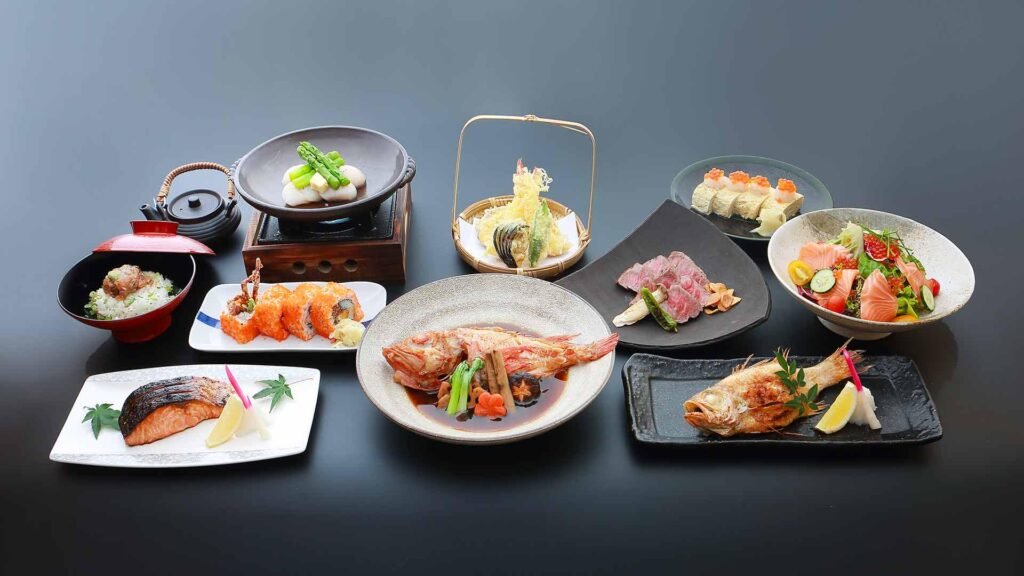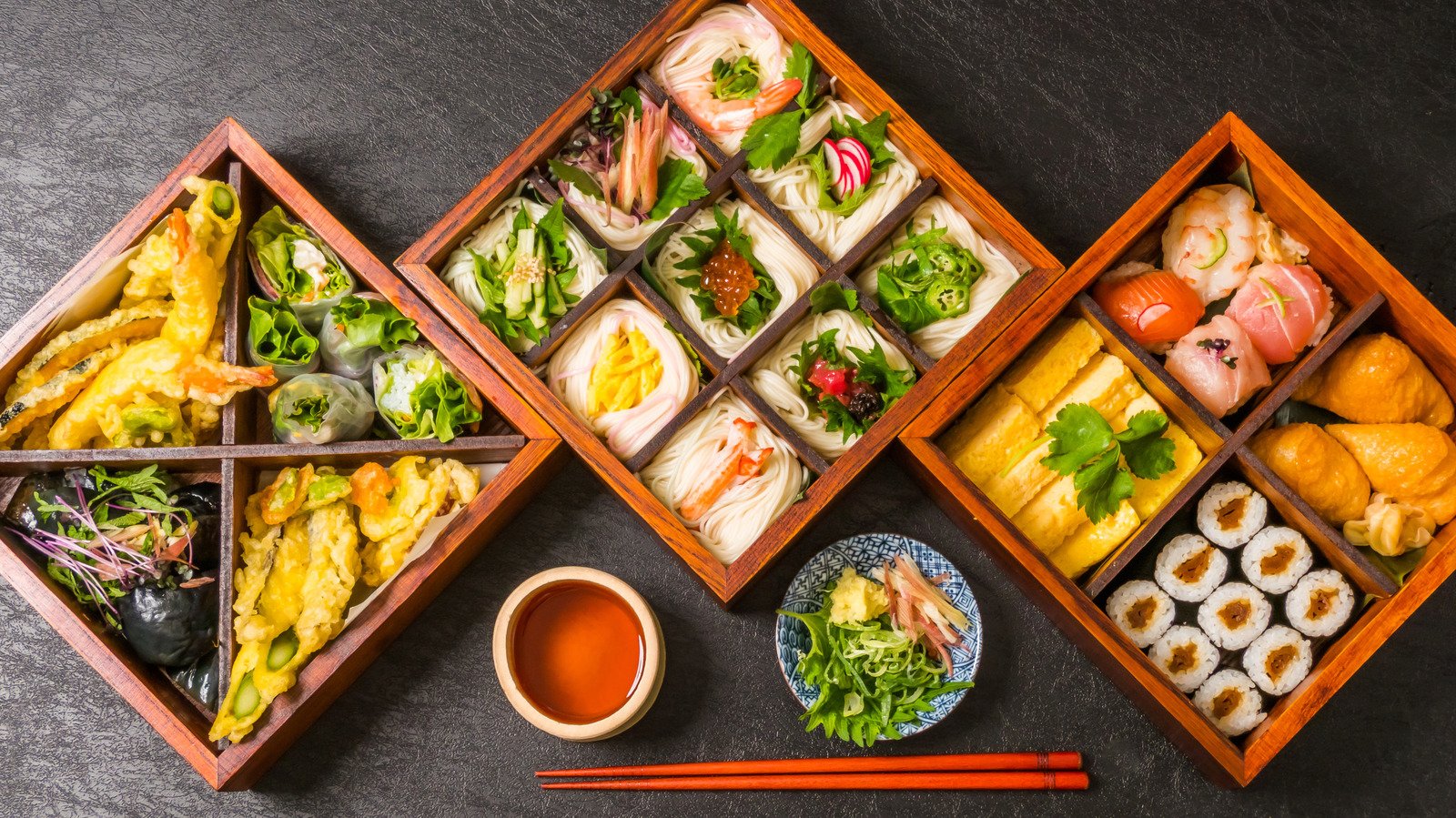A Beginner’s Guide to Japanese Cuisine: Must-Try Dishes
Japanese cuisine is celebrated for its fresh ingredients, delicate flavors, and beautiful presentation. Whether you’re a first-time visitor to Japan or just exploring Japanese food at home, there are certain dishes that you simply must try to get a true taste of the country’s culinary traditions. This beginner’s guide will introduce you to some of the most iconic and delicious dishes that define Japanese cuisine.
1. Sushi (寿司)
Sushi is perhaps the most well-known Japanese dish worldwide, and it’s a must-try for anyone new to Japanese cuisine.
- What It Is: Sushi typically consists of vinegared rice paired with raw or cooked seafood, vegetables, and occasionally tropical fruits. The most common types of sushi include nigiri (a slice of fish atop a small ball of rice), maki (rolls wrapped in seaweed), and sashimi (sliced raw fish without rice).
- Why You Should Try It: Sushi showcases the Japanese principles of simplicity and balance. The combination of fresh ingredients, perfectly seasoned rice, and the umami of seafood creates a harmonious and satisfying meal.
2. Ramen (ラーメン)
Ramen is a Japanese noodle soup that has gained immense popularity across the globe.
- What It Is: Ramen consists of Chinese-style wheat noodles served in a flavorful broth, typically made from meat or fish, and seasoned with soy sauce or miso. Toppings vary but often include sliced pork (chashu), nori (seaweed), menma (bamboo shoots), and a soft-boiled egg.
- Why You Should Try It: Ramen is a comforting and hearty dish with a depth of flavor that comes from hours of simmering the broth. Each region in Japan has its own take on ramen, offering a wide variety of flavors and styles to explore.

3. Tempura (天ぷら)
Tempura is a popular Japanese dish that features lightly battered and deep-fried seafood and vegetables.
- What It Is: Tempura is made by dipping seafood or vegetables into a light batter and frying them until crispy. The batter is typically made from cold water, flour, and eggs, resulting in a delicate, airy coating.
- Why You Should Try It: Tempura offers a wonderful contrast between the crunchy exterior and the tender, flavorful interior of the ingredients. It’s often served with a dipping sauce called tentsuyu and a side of grated daikon radish.
4. Miso Soup (味噌汁)
Miso soup is a traditional Japanese soup that is often served as part of a meal.
- What It Is: Miso soup is made from dashi (a broth made from fish or seaweed) and miso paste (fermented soybean paste). Common additions include tofu, seaweed, and green onions.
- Why You Should Try It: Miso soup is a simple yet deeply satisfying dish that embodies the essence of Japanese home cooking. Its umami-rich flavor makes it a comforting and nourishing start to any meal.
5. Tonkatsu (豚カツ)
Tonkatsu is a Japanese dish consisting of a breaded and deep-fried pork cutlet.
- What It Is: Tonkatsu is made by coating a thick slice of pork loin or fillet in panko breadcrumbs and frying it until golden brown. It is typically served with shredded cabbage, rice, and a tangy, sweet-savory sauce called tonkatsu sauce.
- Why You Should Try It: The combination of the crispy, golden crust and the juicy, tender pork inside makes tonkatsu a delicious and satisfying dish. It’s a great introduction to the Japanese love for perfectly fried foods.
6. Yakitori (焼き鳥)
Yakitori is a popular Japanese skewered chicken dish, often enjoyed as street food or at izakayas (Japanese pubs).
- What It Is: Yakitori is made by grilling skewers of bite-sized chicken pieces, often seasoned with salt or a sweet soy-based sauce called tare. Different parts of the chicken, including thighs, wings, and even organs like liver, are used.
- Why You Should Try It: Yakitori is a flavorful and versatile dish that’s perfect for enjoying with a cold drink. The smoky, savory flavor from the grill adds depth to the tender chicken, making it a must-try street food.
7. Okonomiyaki (お好み焼き)
Okonomiyaki is a savory Japanese pancake that can be customized with a variety of ingredients.
- What It Is: Okonomiyaki is made from a batter of flour, eggs, and shredded cabbage, which is then mixed with ingredients like pork, shrimp, or cheese and cooked on a griddle. It’s typically topped with okonomiyaki sauce, mayonnaise, dried seaweed, and bonito flakes.
- Why You Should Try It: Often referred to as “Japanese pizza,” okonomiyaki is a fun and interactive dish that allows for endless customization. It’s a great example of Japanese comfort food that’s both filling and flavorful.
8. Soba (そば)
Soba are thin buckwheat noodles that can be served hot or cold, depending on the season.
- What It Is: Soba noodles are made from buckwheat flour and have a slightly nutty flavor. They can be served in a hot broth as a noodle soup, or chilled with a dipping sauce on the side, known as zaru soba.
- Why You Should Try It: Soba is a light and healthy option that offers a different texture and flavor from wheat-based noodles. It’s particularly refreshing in the summer when served cold with a soy-based dipping sauce.
9. Onigiri (おにぎり)
Onigiri, also known as rice balls, are a staple of Japanese convenience food.
- What It Is: Onigiri are balls of rice shaped into triangles or rounds and typically wrapped in nori (seaweed). They can be filled with a variety of ingredients, such as pickled plum (umeboshi), salted salmon, or tuna with mayonnaise.
- Why You Should Try It: Onigiri is a simple yet satisfying snack or light meal, perfect for on-the-go eating. Its portability and versatility make it a popular choice for picnics, lunches, or quick bites.
10. Matcha (抹茶) Desserts
Matcha, a finely ground green tea powder, is a key ingredient in many traditional Japanese desserts.
- What It Is: Matcha is made from specially grown and processed green tea leaves. In desserts, it’s used to flavor everything from cakes and cookies to ice cream and mochi. Matcha’s rich, slightly bitter taste pairs well with sweet ingredients, creating a balanced flavor profile.
- Why You Should Try It: Matcha offers a unique and distinctly Japanese flavor that’s both earthy and aromatic. Trying matcha-flavored sweets is a delicious way to experience a traditional Japanese tea culture.
Conclusion
Japanese cuisine offers a vast array of dishes that are both delicious and deeply rooted in the country’s cultural traditions. Whether you’re enjoying a simple bowl of miso soup or indulging in a piece of sushi, each dish provides a glimpse into the careful craftsmanship and attention to detail that defines Japanese food. This beginner’s guide to must-try Japanese dishes is just the start—there’s a whole world of flavors waiting to be explored in Japan’s rich culinary landscape.



